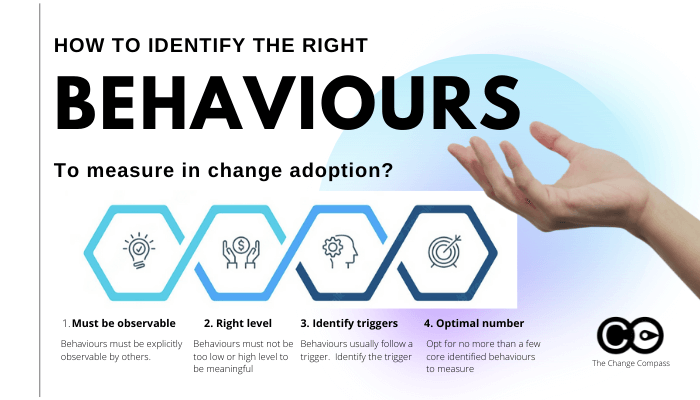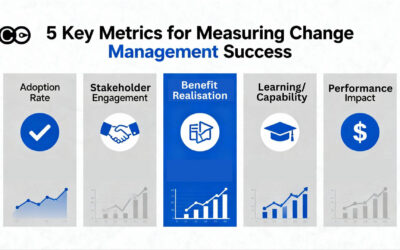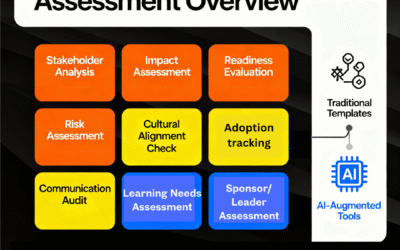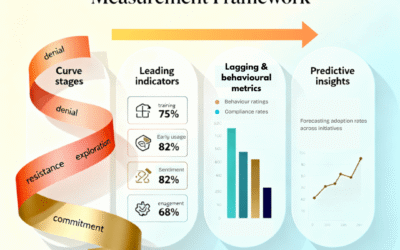Measuring behaviours as a part of change adoption is a key part of effective change management, ensuring the full achievement of initiative benefits and helping practitioners understand whether impacted stakeholders are truly moving toward the future state. Behaviour change, particularly in domains like physical activity and health behavior, has been the subject of significant empirical research, with findings published in major outlets like Google Scholar. To design behaviour change interventions and select the right behaviours to measure, change practitioners should take a structured approach, informed by research findings and practical experience. There are different approaches to effective measurement and we explore some of these.
Selecting the Right Behaviours to Measure
Start with a clear understanding of the initiative’s objectives, the current state, the complexity of the change, different impacts, the change approach, target behaviours, and the quantum of the change being introduced. Not every behaviour is equally important; focus on the key elements most closely tied to initiative success and the full adoption of behaviours required for the future state.
Consider the impacted person’s perspective toward the desired future state: What will they have to do differently? From adopting new physical behaviours (such as physical effort required in physical activity interventions) to changes in decision-making or collaboration, choose behaviours that best reflect actual change, not just awareness or intent.
Prioritize observable and measurable actions. Research suggests that reminders of events or structured prompts can support behaviour change, but measuring the visible results of these reminders—such as compliance rates, social norm adherence, or reduction in social deviance—is essential for meaningful metrics.
Design and Measurement Considerations
Resist the heavy design of change interventions that lead to measurement overload. Simplicity and ease of understanding are crucial, both for those being measured and those collecting the data.
Draw from behavioral change frameworks supported by significant empirical research. For example, a Stanford professor’s work on social norm dynamics highlights how aligning behaviours with group expectations—rather than just individual compliance—can create more durable change.
Integrate measurement as part of a series of change interventions. Behaviour rarely shifts overnight; structured reinforcement, monitoring, and feedback, as supported by research findings, are necessary for full adoption.
Best Practice Tips
Use multiple sources of data: direct observation, self-reports, digital analytics, and reminders of events all have roles in robust measurement systems.
Anchor behaviour change efforts to broader elements like organizational culture (social norms) and systems for monitoring and feedback, to sustain behavioural change and minimize social deviance.
Apply the old adage, “what gets measured, gets managed,” but with the right focus—select measures tightly linked to initiative success.
Ultimately, successful behaviour change – and its measurement – depends on aligning the structured approach of change management with an empathy for the impacted person’s journey. Choosing the right behaviours to measure, grounded in significant empirical research and designed for ease of understanding, supports not only the full achievement of initiative benefits but also continuous improvement for future state readiness
Whilst there could be a wide range of different behaviours depending on the initiative in concern, what are some of the tips in selecting the right behaviours to measure?
Check out our infographic on the top 4 elements to pay attention to when measuring behaviours as a part of change adoption metrics. Also check out Dr BJ Fogg’s model (Stanford University) on effective behaviour change.






